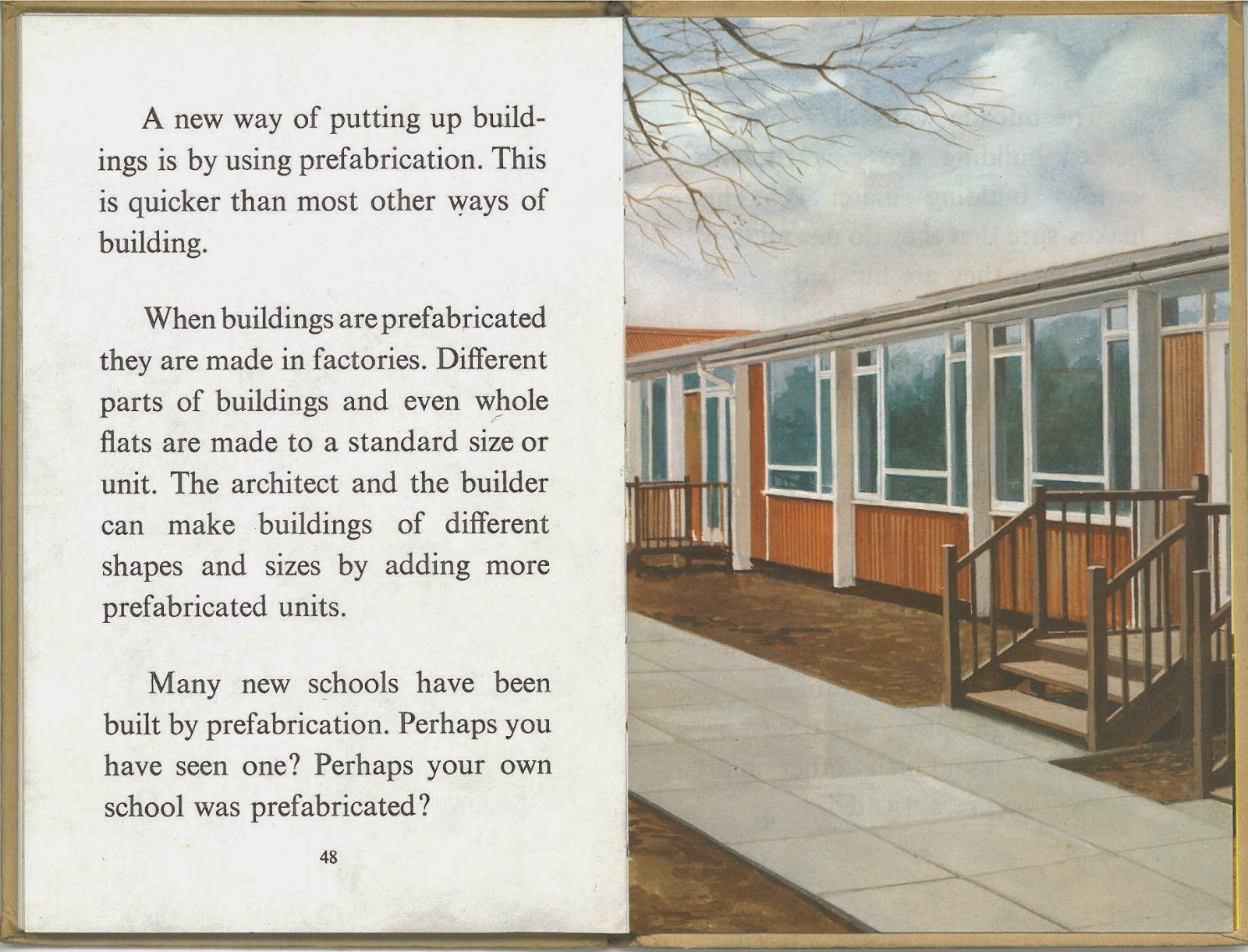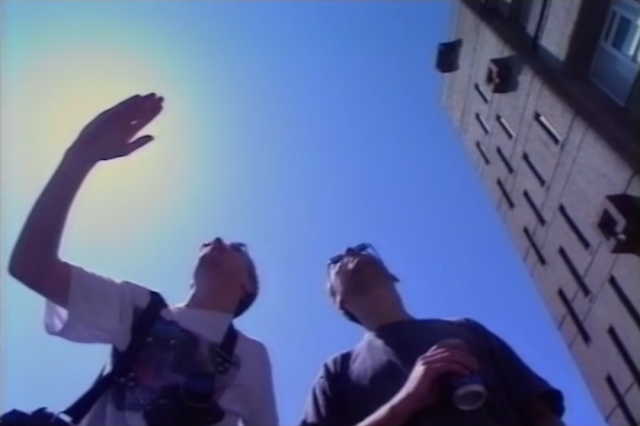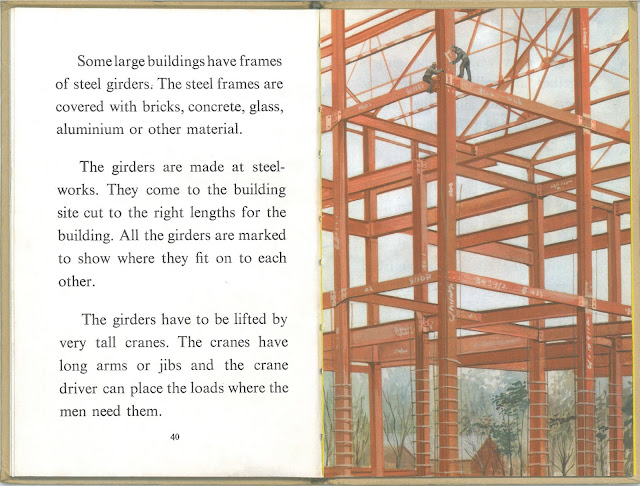Interview with The Brutal Artist
I've been getting a lot of questions about The Brutal Artist, the mysterious illustrator whose work has so enlivened How To Love Brutalism. So we conducted this email interview. Follow The Brutal Artist on Twitter and Instagram.
- How did you first get into illustration? Has it been a fascination since childhood or a more recent passion?
I've always been interested in art even as a
child, but as the years progressed, it kind of fell by the wayside as
other things started happening in my life, until the drawing aspect
disappeared completely. It wasn't until 2014 that I started to pick up a
pencil again. I was going through a bout of fairly serious depression
and had a sudden thought of going back to watercolor (which I used to do
all the time) and sketching.
- Did you go to art school or attend art classes, or are you self-taught?
I did GCSE and A level art many years ago, but that's the extent of any formal training. The rest is down to picking up stuff as I went along.
- Do you have a typical way of working? Which mediums do you prefer to work in?
Usually it's sketching out a design in pencil and then going over in pen
(unipin 01 if anyone is curious). Once all basic linework is done then I
fill in the blocks of black with ink then do the detailed line work.
However, I'll discover something new and then incorporate that. Recently
I rediscovered charcoal which was almost joyous. It's taught me to try
and relax and I find it somewhat liberating not having to be so
meticulous with a sketch (even though it's a habit I struggle with).
Laziness has also made me discover the joys of cross-hatching. I was
doodling a sketch and really couldn't be bothered to lay out the
brushes, pallet, ink and water so I just ended up cross-hatching the
shadows and textures in. Although I do need to teach myself to do it
properly as some sketches I've done just don't look right. So that's
something I'll be working on in the coming months.
- How do you find time to draw? How long does it take you to complete an illustration?
It's difficult. I'll set aside a day in which to work on sketches and
when the time comes, I find I'm not in the mood to draw - this is
happening frequently lately. But when I am in the mood I'll sit and draw
for hours on end. Usually it takes me a week or so to fully complete an
illustration. What I'll do is some rough sketches in pen and ink of one
building, from several perspectives (what I call "finding the bones of
the building". Then I'll pick an angle I really like and then do the
final drawing in pen and just black ink. The sketches can take anywhere
from 20 minutes to an hour, the final drawing usually takes between 1 - 2
hours.
- You are well known for your architectural illustrations, what drew
you to representing buildings? And why the fascination with brutalism?
I could come out with an answer where I extol the virtues of the
ideology and aesthetic appeal of brutalism, however I'll go with raw, brutal
honesty here. In my twitter bio it reads "I don't know much about
architecture, I just like drawing it" and that's the painful truth. I
really am ignorant of architecture, to the point where I can't remember
which architect designed which building (I have an appalling memory) I
have frequently disappointed people on twitter where they try and engage
me in an in-depth conversation about architecture and Brutalism in
particular. However, I am trying to educate myself as I think I really
should know more about the buildings I'm drawing. I've started a
collection of books on the subject and I'm slowly working my way through
them: Elain Harwood's Space, Hope and Brutalism; Concrete Concept by Christopher Beanland; Brutalism by Alexander Clement and Raw Concrete by Barnabas Calder (oh, and How to Love Brutalism...) so by the end of reading those, I may remember enough not to embarrass myself.
I was drawn to Brutalism back in 2014. I had started to draw after what
must be have been a 10+ years absence and tried drawing what I used to
draw - nature, botanical etc and I was getting so frustrated with
myself. Then I suddenly remembered going through a period of drawing
buildings so I did an image search (I can't for the life of me remember
what the search term was) and ended up with an image of Zuyev Workers
Club in Moscow. It was incorrectly labelled as brutalist (I didn't know
at the time that it was actually constructivist) so I searched for
brutalist buildings. I found myself liking the style more and more and
so focused mainly on that. For me it appealed to the sci fi/dystopian
image that fascinated and terrified me as a child.
- Are there other subjects you enjoy drawing too? Is there an unbrutal side to The Brutal Artist?
I used to love drawing botanical watercolours but I now cannot draw
anything like that, I'm absolutely rubbish. I do like zentangles and the
repetition of marks. My main other creative outlet is crochet and
knitting. I knitted two Doctor Who scarves as Christmas presents
(to the original pattern) and I had a lot of leftover wool, so I'm
currently crotcheting a Doctor Who blanket for the sofa.
- Do you have a favourite piece you have produced?
I have three: the close-up view of The Barbican, The Palace of Assembly
and the St Paul's/Barbican mash-up, all in How To Love Brutalism.
- What do family and friends think of your work?
I think there's really only my Dad and one friend who genuinely likes
the subject matter (he'll frequently send me links and photos of
buildings), everyone else just appreciates the work gone into each
piece. My mum HATES Brutalism, so every now and then I'll draw something
she'll like! My husband appreciates the work and is extremely
supportive. He's been trained well to spot Brutalism in things we'll
watch, so he'll screenshot frames (Knight Rider and Wonder Woman have been screen-shotted frequently).
- Have you been surprised by the reaction to your work since you've been sharing it online?
I am absolutely stunned, to be honest. I don't do this for a living,
it's strictly a hobby as I'm very much a beginner, I've only been
drawing like this for 3 years so I've still a hell of a lot to learn.
The reactions have been on the whole brilliant and people have been so
lovely in their comments. It's all been very much appreciated and
surprising.
- I was very excited to work with you on How To Love Brutalism. How did you approach the illustrations for the book?
Ditto! The invitation was absolutely a shock!. As to how did I approach
the illustrations... with a lot of swearing John, with a LOT of
swearing. When I received the list, I noticed there were a number of
buildings there that I had been purposefully avoiding due to sheer
cowardice such as Marina City, Habitat 67, Torres Blancos and Centre
Point. However it dragged me out of my comfort zone and as it happened,
those were the buildings that didn't cause me many problems at all.
I spent a couple of days doing image searches for various angles and
trying out different perspectives. Then, when I had my final images
chosen, I commandeered the dining table (I don't have a studio/specific
area). I drew several sketches of each building and these formed the
basis for each final piece. Some like The Tricorn Centre and The
National Theatre (one of my absolute favourite buildings), I had drawn
many times before, so those were no difficulty.
- Do you have any illustration heroes and what is it about their work that has inspired you?
My illustration heroes are mainly from childhood as these are the
drawings and paintings that drew me in, imagining myself in the
drawings/paintings. Peter Cross illustrated one of my favourite books
ever, Trouble for Trumpets. Each illustration is filled with love and crammed with the most ridiculous detail. Kit Williams' Masquerade
was a book I used to pour over as a child because the illustrations
used to disturb and unsettle me and I used to return to it time and time
again. One of my favourites is a guy who I can't even remember his name
(maybe one of your readers will know who I mean). I watched a programme
years ago with my dad, maybe early 90s, and it featured an artist
who drew tiny little thumbnail drawings of fictitious cities with
arches, hot air balloons, little towers etc and I remember a lot of
cross-hatching. For a man whose name I can't remember, he's been an
enormous influence. I'm also a big fan of Molly Crabapple, her work is
absolutely exquisite and extremely thought provoking, she takes you
places you're not comfortable going to but you end up learning a lot.
I'll also give the film Akira (1988) an honourable mention.
- Are there illustrators or artists at work today you would love more people to take notice of?
I've stumbled across many on instagram that I had no idea were out
there, most of them are way more known than I am, but still need a
bigger following than they have because of their talent. Didouph does
these amazing line pieces that are so atmospheric and have an unsettling
effect (I love art that disturbs me in subtle
ways). There's @albertchamillard who also does line pieces in old
ledgers. People also need to check out Taylor Mazer (@tlmazer), that
guy's talent is instance. He creates small pieces that on first glance
could pass as photographs. I'm also a huge fan of Mandy Payne's
(@mandypayne24 on twitter) work on concrete and stone lithography.
- Do you have any advice for someone keen to take up illustration, either as a hobby or professional?
Don't be afraid to go out of your comfort zone in terms of mediums and
subject matter. If it doesn't work, who's going to know but you? Don't
play it safe.
- Are you pleased with the finished book?
I'm blown away by it. Your prose is engaging and educational and the
book design is an absolute thing of beauty. Batsford have done a
brilliant job on it. It's been a real honour to be asked to be part of
the project.













Comments